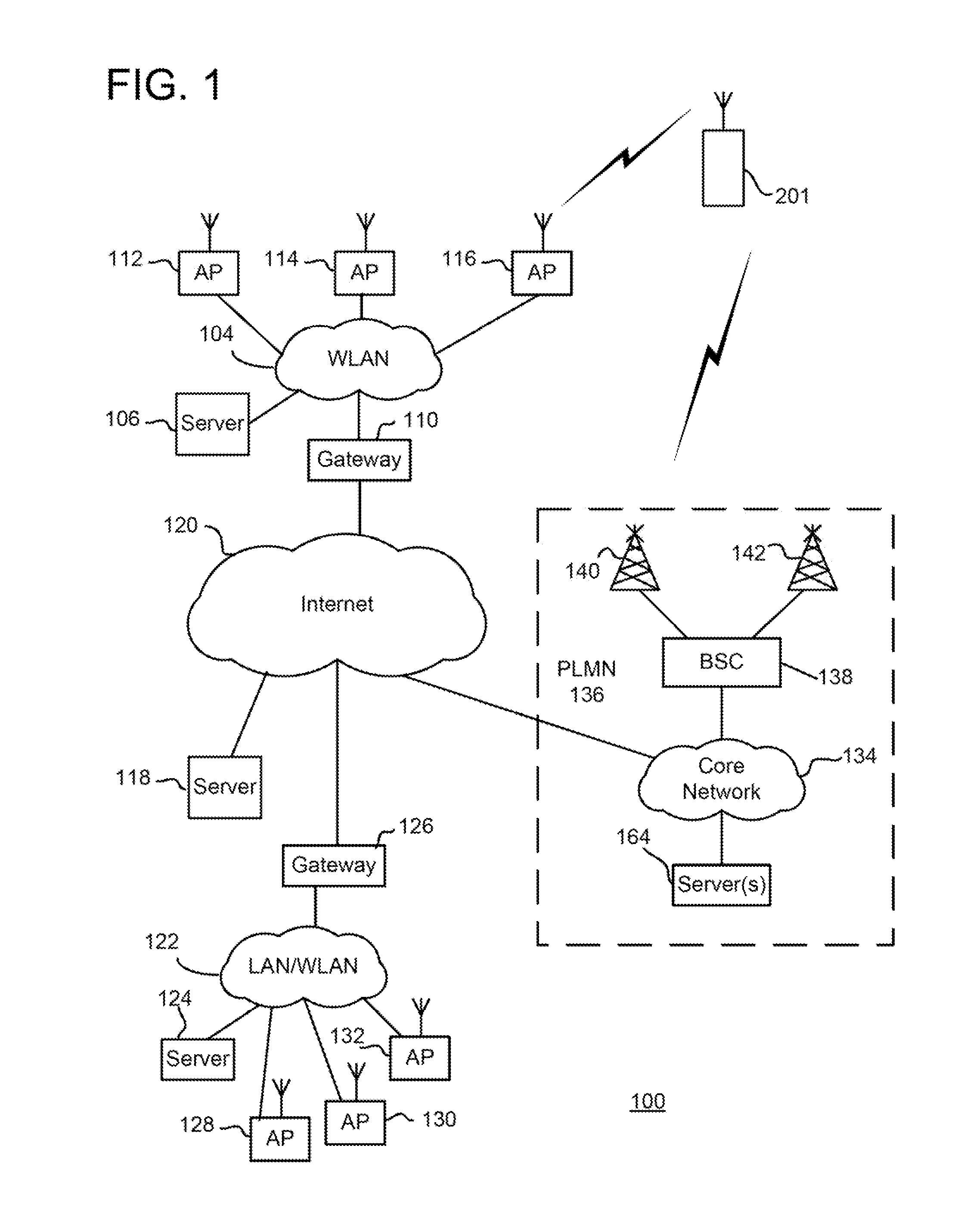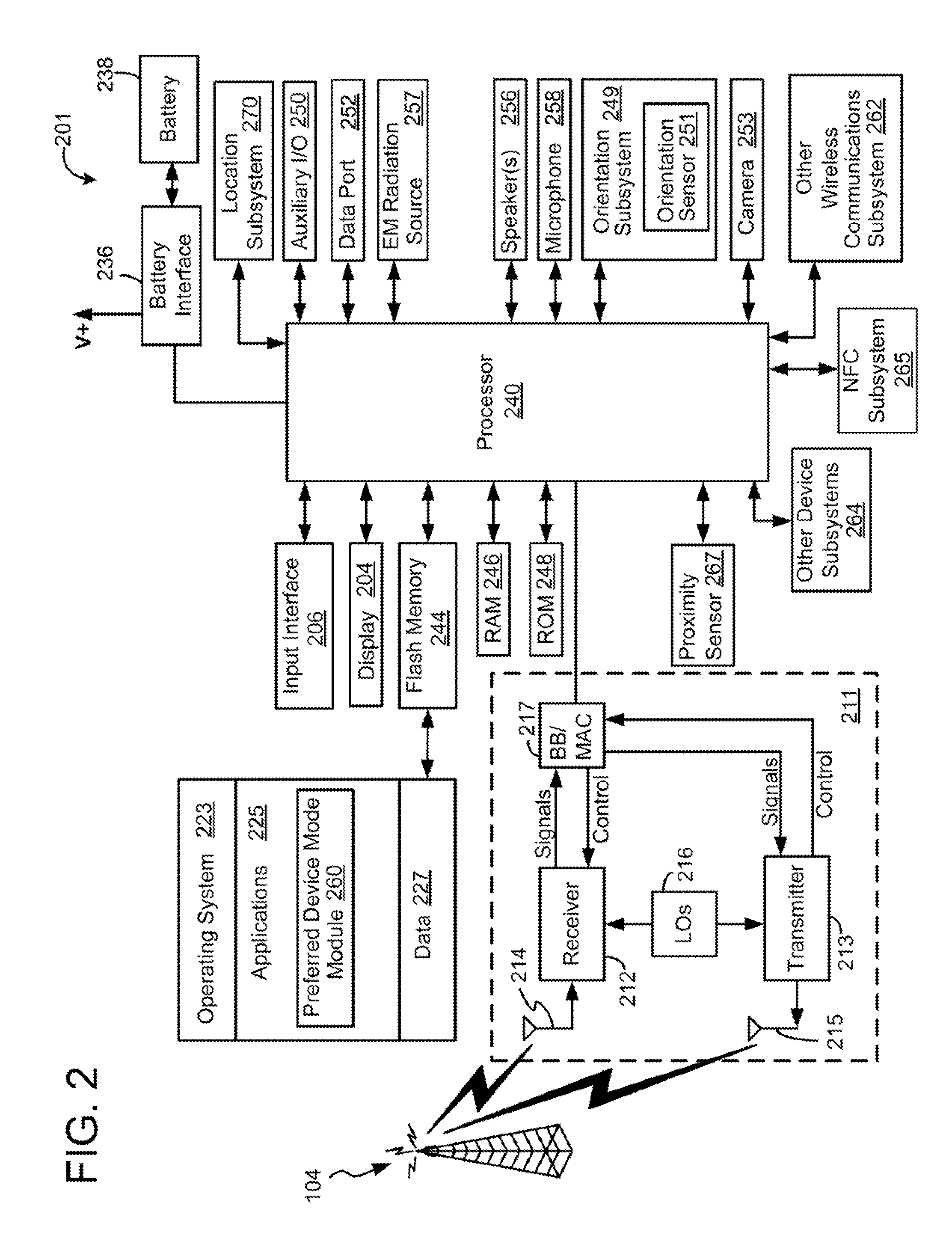Access Point And Channel Selection In A Wireless Network For Reduced RF Interference
a wireless network and access point technology, applied in the field of mobile communication devices, can solve problems such as harmonic interference, possible out-of-band rf interference,
- Summary
- Abstract
- Description
- Claims
- Application Information
AI Technical Summary
Benefits of technology
Problems solved by technology
Method used
Image
Examples
Embodiment Construction
[0016]Techniques are described for reducing RF interference of communications with a first wireless network of a first type (e.g. WAN or IEEE 802.11 technology) due to simultaneous communications with a second wireless network of a second type (e.g. LTE technology). For each access point in the first network of the first type, a mobile device identifies a frame error rate of communications. The frame error rate is measured while simultaneously communicating with the second network of the second type. The mobile device stores the frame error rate in association with an access point identifier of the access point. Upon encountering the first network again, the mobile device prioritizes the selection of an access point based on a ranking of the access points according to their associated frame error rates from lowest to highest. Further, the mobile device may use adjusted hysteresis parameters for making a handover decision in order to reduce a “ping-pong” selection between access poin...
PUM
 Login to View More
Login to View More Abstract
Description
Claims
Application Information
 Login to View More
Login to View More - R&D
- Intellectual Property
- Life Sciences
- Materials
- Tech Scout
- Unparalleled Data Quality
- Higher Quality Content
- 60% Fewer Hallucinations
Browse by: Latest US Patents, China's latest patents, Technical Efficacy Thesaurus, Application Domain, Technology Topic, Popular Technical Reports.
© 2025 PatSnap. All rights reserved.Legal|Privacy policy|Modern Slavery Act Transparency Statement|Sitemap|About US| Contact US: help@patsnap.com



